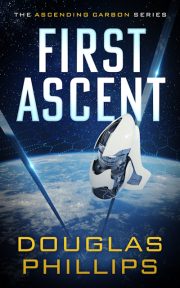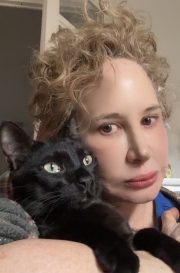Writing SF For Kids
by Justin Stanchfield
Is writing science fiction or fantasy for younger markets really different?
Well …
Yes and No.
It’s true that children’s lit, especially for early readers, can follow a simpler format than mainstream fiction.
But …
Everything you know about writing, all the rules, guidelines and advice you’ve been given before still applies. You have to establish a convincing background, filled with characters the reader cares about, facing difficult challenges, and rising to the occasion to resolve the plot.
And you have to do it all in less than two thousand words!
That’s seven or eight pages, if you’re dealing with middle grade or YA magazines. Write for a market younger than this and expect word-counts lower than 1000 words. Some even demand the story be complete in 300 words.
On the plus side of the equation, once you have the story firmly in your mind, you can easily turn out a finished story in one or two writing sessions. And the kids’ magazines pay very well, generally more per word than comparable adult markets. Selling to a major children’s magazine can bring the author between $150 to $300, and some pay far in excess of that. So, if you think you have what it takes to write for kids, here are a few pointers.
- You may be writing for kids, but you’re selling to adults.
Kids’ editors are every bit as savvy and professional as the editors of any other major publication. They suffer the same strains and time constraints as anyone else who has ever donned an editor’s hat. - Write older.
What does this mean? For one thing, if you are targeting ten year old boys, your protagonist better be at least twelve. Kids won’t read about somebody younger than themselves. It also means that you should never talk down to your audience. Don’t intentionally simplify your style. Younger readers need to be challenged just as much as older ones. More than once I’ve written stories with teenagers in mind, only to have them printed in magazines for middle graders. The point is, kids are a lot smarter than we sometimes realize. - Know your market
There are hundreds of children’s magazines out there, but only a few that will be interested in any particular story. Know the niche you are writing for. Read the guidelines. Better yet, read the magazines. Go to the Children’s Library. (Or next time you’re in a doctor’s office, go through the stacks of kids mags scattered about.) Ignore the strange glances. You’re a writer. People already suspect you’re insane. - Write what you know.
All right, we’ve all heard this one before. But with children’s lit it takes on a new perspective. Reach back into your childhood. Try to remember how it felt to be a kid at five years old, at eleven, and again as a teenager. Pick out specific times and instances that stand the most clear in your memory, and try to put those same emotions into your characters. - Kids have to solve their own problems.
Just as an adult protagonist has to overcome, or be defeated by, their own actions, so does the hero of your middle-grade adventure story. You can still have adult characters in the piece, but your protagonist needs to win or lose on her own merit. Period. - Don’t preach.
If there is a moral to the story, hide it! Kids don’t like being hit over the head with the point of your story. Neither do editors. If you do have a point to make, be certain it fits the story, helps resolve the crises, and is woven into the character’s words and deeds. If ever there is a place for “Show, don’t tell,” it’s in kid’s lit. - Write tight.
If you have only fifteen hundred words to play with, every word has to pull its own weight. Cut wasted dialog and unneeded descriptions. Use strong action verbs in short, punchy sentences. (Think Hemingway, not Dick and Jane.) Another hint: Don’t waste a lot of time describing your viewpoint character. The reader should place himself squarely in the POV’s shoes if you’ve done your job properly. Keep physical descriptions of them to a minimum. - If you are writing science fiction, check your science.
You are writing for an impressionable audience, one that trusts what they see in print. Be careful not to misinform. Besides, editors do check the numbers. - Can kids enjoy hard SF?
Of course they can, as long as you can hold their interest. If the science in our fiction loses our crowd, it’s our fault as writers, not theirs as readers. Same holds true for fantasy: they can enjoy it if it holds their interest, and it’s the writer’s job to make sure the work holds the reader’s interest. - Things to avoid:
- Dead grandmother stories.
- Talking animals.
- Scary witches who turn out to be kindly old ladies.
Editors have seen them all. Try to be original.
- Above all else, remember who you are writing for.
Think back to the stories and books, even the movies, that shaped your life. Now think about the lives you may be shaping. Give kids your very best. They deserve it.
Some Helpful Writer’s Sites
Children’s Writing Resources
Critters Workshop
The Children’s Literature Web Guide


